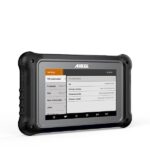Determining whether your 1995 Acura Integra GSR is equipped with an OBD1 or OBD2 system is crucial for diagnostics and repairs. Understanding the On-Board Diagnostics (OBD) system in your vehicle will significantly impact how you approach troubleshooting engine issues and selecting the right diagnostic tools. This article will clarify the OBD system typically found in a 1995 GSR and discuss the implications for owners and mechanics.
The 1995 model year falls within a transitional period for automotive diagnostic standards. OBD1 was the prevailing standard for many vehicles in the early to mid-1990s, while OBD2 was federally mandated in the United States for all cars manufactured from 1996 onwards. Therefore, 1995 vehicles often present a point of confusion.
For the 1995 Acura Integra GSR, it is widely recognized and generally accepted that it utilizes an OBD1 system. This means it employs the earlier generation of on-board diagnostics. OBD1 systems are characterized by:
- Diagnostic Connector: Typically a proprietary connector, often located in the engine bay or under the dashboard, but not standardized like the OBD2’s 16-pin Data Link Connector (DLC).
- Diagnostic Codes: OBD1 systems often use a simpler code system, and retrieving codes may require specific tools or methods, such as using a scan tool compatible with OBD1 or employing a paper clip method to read flashing engine lights.
- Limited Data Parameters: Compared to OBD2, OBD1 systems monitor fewer parameters and provide less detailed diagnostic information.
Alt: OBD1 diagnostic connector, a non-standardized port commonly found in 1995 Acura Integra GSR models.
While the 1995 GSR is overwhelmingly OBD1, it’s always prudent to visually verify the diagnostic connector in your specific vehicle. Locate the diagnostic port, usually under the dash on the driver’s side or in the engine bay. An OBD1 connector will be distinctly different from the trapezoidal 16-pin OBD2 DLC.
If you are facing diagnostic challenges with your 1995 GSR, understanding it’s likely OBD1 is the first step. Attempting to use OBD2 diagnostic tools directly will be unsuccessful without proper adapters or conversion methods. For those considering modifications or engine swaps, knowing the OBD system is critical for ECU compatibility and wiring.
Some enthusiasts explore converting OBD2 vehicles to OBD1 for various reasons, often involving ECU tuning and engine management preferences. Conversion harnesses, like those from Rywire, are available to facilitate this process, allowing an OBD2 vehicle to utilize an OBD1 ECU. However, for a 1995 GSR that is originally OBD1, such a conversion would be unnecessary and counterproductive.
Instead of considering complex conversions or replacing your vehicle due to diagnostic complexities, focusing on proper OBD1 diagnostic procedures and repair is the most effective approach. Ensure your mechanic is familiar with OBD1 systems or seek out a Honda/Acura specialist who possesses the knowledge and tools to diagnose your 1995 GSR effectively. Repairing your existing Integra, equipped with its native OBD1 system, is often a more cost-effective and sensible solution than replacing the entire car.
In conclusion, the 1995 Acura Integra GSR is, in almost all cases, an OBD1 vehicle. Confirming this and proceeding with appropriate OBD1 diagnostic methods will streamline troubleshooting and repair processes, ensuring your classic Integra remains on the road.
